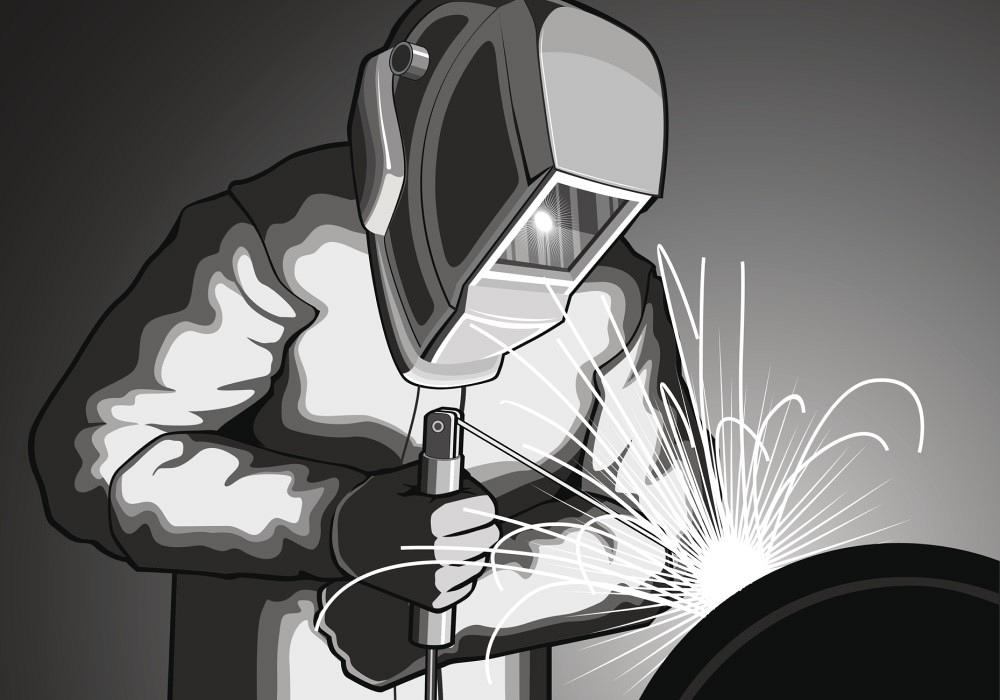Welding WPS Explained: Trick Elements and Benefits for Your Welding Processes
Welding WPS Explained: Trick Elements and Benefits for Your Welding Processes
Blog Article
The Ultimate Guide to Welding WPS Procedures: A Detailed Introduction for Welders
In the intricate globe of welding, Welding Treatment Requirements (WPS) act as the backbone of making sure quality, uniformity, and safety and security in welding operations. Recognizing the nuances of producing, applying, and checking WPS procedures is important for welders seeking to boost their craft and fulfill sector standards. As we dig into the various elements of a WPS and explore the details of qualification and qualification, we will uncover the vital role these procedures play in the realm of welding. Allow's embark on a journey to untangle the intricacies and value of WPS treatments in welding techniques.
Significance of WPS Procedures
Recognizing the value of Welding Treatment Specifications (WPS) procedures is important for making sure the quality and honesty of welded frameworks. WPS procedures function as a roadmap for welders, detailing the essential actions, parameters, and materials required to attain a sound weld. By sticking to WPS guidelines, welders can ensure uniformity in their work, resulting in structurally sound and reputable welds.
One of the main reasons why WPS treatments are necessary is their function in maintaining weld quality and stability. Following the specified welding parameters and methods laid out in the WPS helps stop problems such as porosity, breaking, or insufficient fusion, which can jeopardize the toughness and toughness of the weld.

Elements of a WPS
A Welding Procedure Specification (WPS) generally comprises necessary elements that information the certain demands for executing a weld, making sure consistency and high quality in the welding procedure. The crucial components of a WPS include vital variables such as base metals, filler steels, preheat and interpass temperature levels, welding processes, securing gases, welding positions, and post-weld warm treatment needs.
Base metals refer to the materials being signed up with, while filler steels are made use of to fill the space in between the base metals throughout welding. The welding procedure lays out the specific strategy to be made use of, whether it's gas steel arc welding (GMAW), secured steel arc welding (SMAW), or another technique. Welding placements define the positionings in which welding can be executed.

Credentials and Certification
Having established the crucial components of a Welding Procedure Spec (WPS), the emphasis now shifts in the direction of the critical facets of credentials and accreditation in welding methods.

Certification, on the other hand, is the official recognition of a welder's certifications by a pertinent qualification body or organization. Welding certifications are normally based on the particular welding procedures, products, and placements a welder is qualified to deal with. Holding a valid welding certification demonstrates that a welder fulfills industry requirements and is skilled to perform welding jobs to the called for requirements.
Developing a WPS
To establish a Welding Procedure Requirements (WPS) that meets sector criteria, mindful consideration of welding procedures, materials, and functional parameters is vital (welding WPS). The initial step in developing a WPS is to determine the welding procedure to be made use of, such as gas metal arc welding (GMAW) or protected steel arc welding (SMAW) When the welding process is determined, the next critical element is picking the ideal materials, considering factors like base metal type, thickness, and joint style. Operational parameters such as welding current, voltage, traveling speed, and securing gas make-up have to also be thoroughly Home Page defined in the WPS.

Applying and Keeping Track Of WPS
Upon settling the extensive Welding Treatment Requirements (WPS) that carefully information welding procedures, products, operational specifications, and quality control measures, the emphasis shifts to efficiently carrying out and checking the recognized treatments. Execution entails guaranteeing that all welders associated with the project know with the WPS and follow it diligently during the welding process. This requires supplying ample training and supervision to guarantee adherence to the defined procedures. Keeping an eye on the WPS entails continuous oversight to verify that welding activities align with the documented specifications. Assessments, testing, and quality assurance steps are crucial parts of the monitoring process to determine any issues or discrepancies immediately. Routine audits and reviews of the welding procedures assist in maintaining uniformity and high quality throughout the task. Efficient execution and surveillance of the WPS are important for making certain the integrity, strength, and safety and security of the welded joints, ultimately contributing to the overall success of the welding task.
Conclusion
In verdict, understanding and following Welding Procedure Requirements (WPS) is essential for welders to ensure top quality, consistency, and security in their work. By understanding the parts of a WPS, obtaining appropriate qualifications and certifications, creating in-depth procedures, and executing and checking them effectively, welders can improve their abilities and proficiency in welding techniques. Sticking to WPS treatments check my site is necessary for producing high-grade welds and conference sector criteria.
In the detailed world of welding, Welding Procedure Specifications (WPS) serve as the foundation of guaranteeing top quality, consistency, and safety in welding operations. The welding procedure outlines the certain technique to be used, whether it's gas metal arc welding (GMAW), protected steel arc welding (SMAW), or another technique.To establish a Welding Procedure Specification (WPS) that meets industry standards, cautious consideration of welding processes, products, and operational specifications is necessary. The very first step in creating a WPS is to identify the welding process to be utilized, such as gas metal arc welding (GMAW) or protected steel arc welding (SMAW)Upon wrapping up the thorough Welding Procedure Spec (WPS) that meticulously details welding processes, products, functional criteria, and quality assurance actions, the focus changes to successfully applying and checking the established procedures.
Report this page